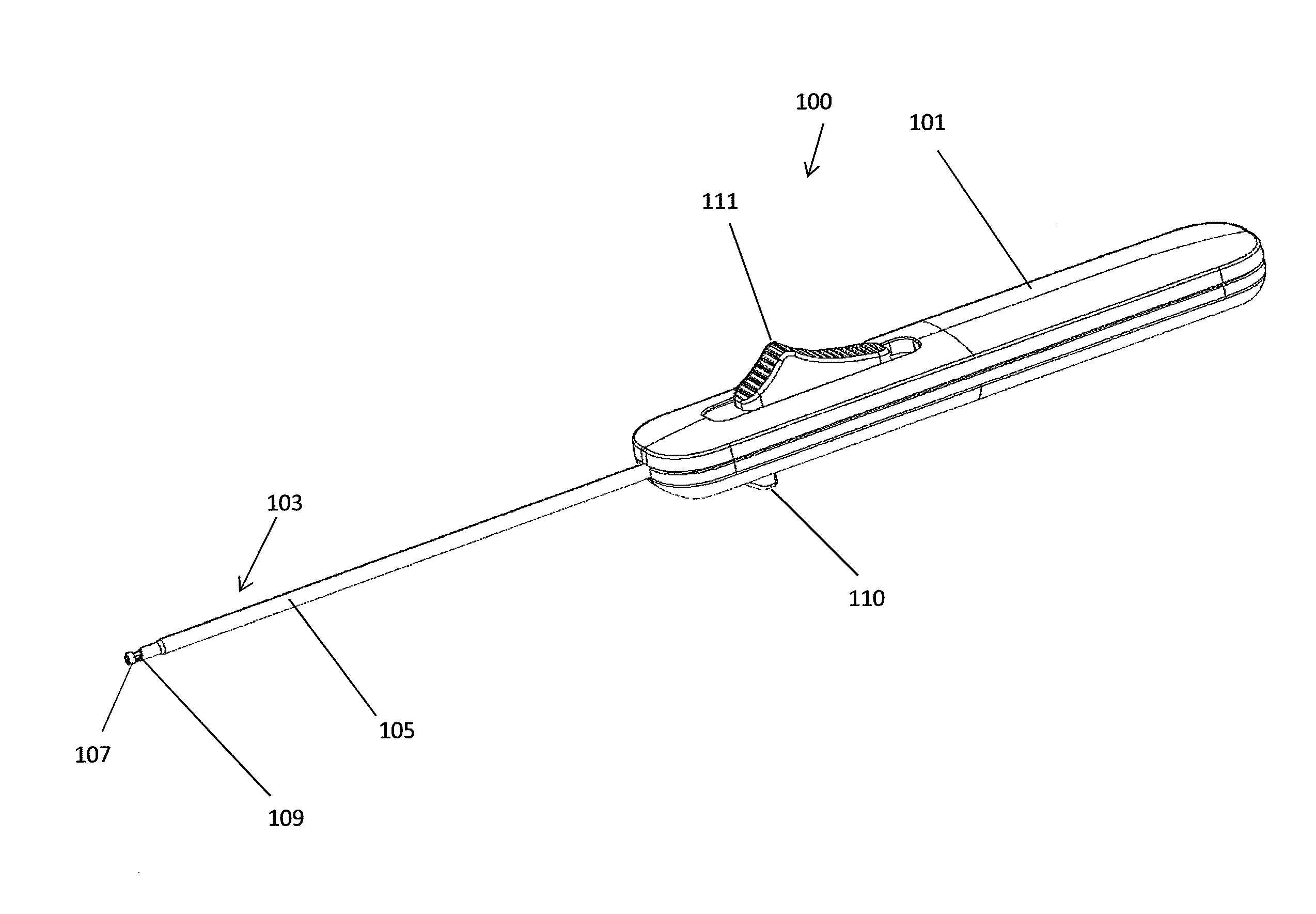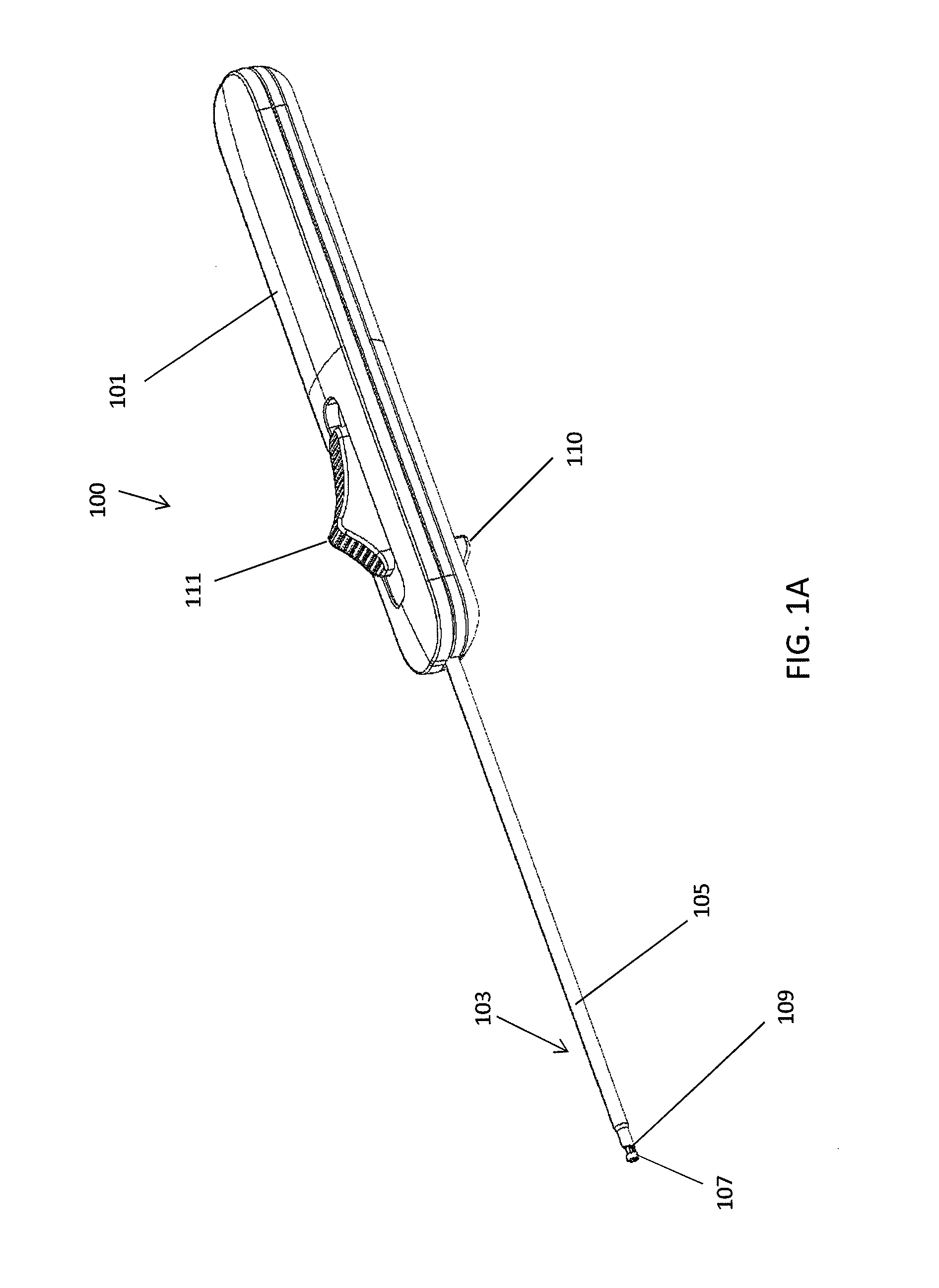Arthroscopic knot pusher and suture cutter
a pusher and suture technology, applied in the field of suture cutting equipment, can solve the problems of undesirable access to tissue in this manner, time-consuming suture cutting of tissue during surgical procedures, and difficulty in particular, so as to prevent suture from falling.
- Summary
- Abstract
- Description
- Claims
- Application Information
AI Technical Summary
Benefits of technology
Problems solved by technology
Method used
Image
Examples
Embodiment Construction
[0055]Described herein are combination knot pusher and suture cutter apparatuses for manipulating (e.g., pushing) a pre-tied knot in a suture to a desired location and then for cutting excess suture proximal to the knot. The apparatuses described herein may include a handle attached to an outer holding tube (or pushing member). The handle may include a thumb ring at the proximal end for holding the device. The outer holding tube typically extends around an inner rod (also referred to as an inner member or inner mandrel). The distal ends of the outer holding tube and inner member may generally be configured to engage a suture in a laterally (proximally-to-distally) extending region of the inner member and the outer holding tube, so that the distal end of the device may be used to push a pre-tied knot, which typically has a diameter greater than the diameter of a distal-facing opening between the holding tube and the inner member, along the suture strand by advancing the apparatus dis...
PUM
 Login to View More
Login to View More Abstract
Description
Claims
Application Information
 Login to View More
Login to View More - R&D
- Intellectual Property
- Life Sciences
- Materials
- Tech Scout
- Unparalleled Data Quality
- Higher Quality Content
- 60% Fewer Hallucinations
Browse by: Latest US Patents, China's latest patents, Technical Efficacy Thesaurus, Application Domain, Technology Topic, Popular Technical Reports.
© 2025 PatSnap. All rights reserved.Legal|Privacy policy|Modern Slavery Act Transparency Statement|Sitemap|About US| Contact US: help@patsnap.com



